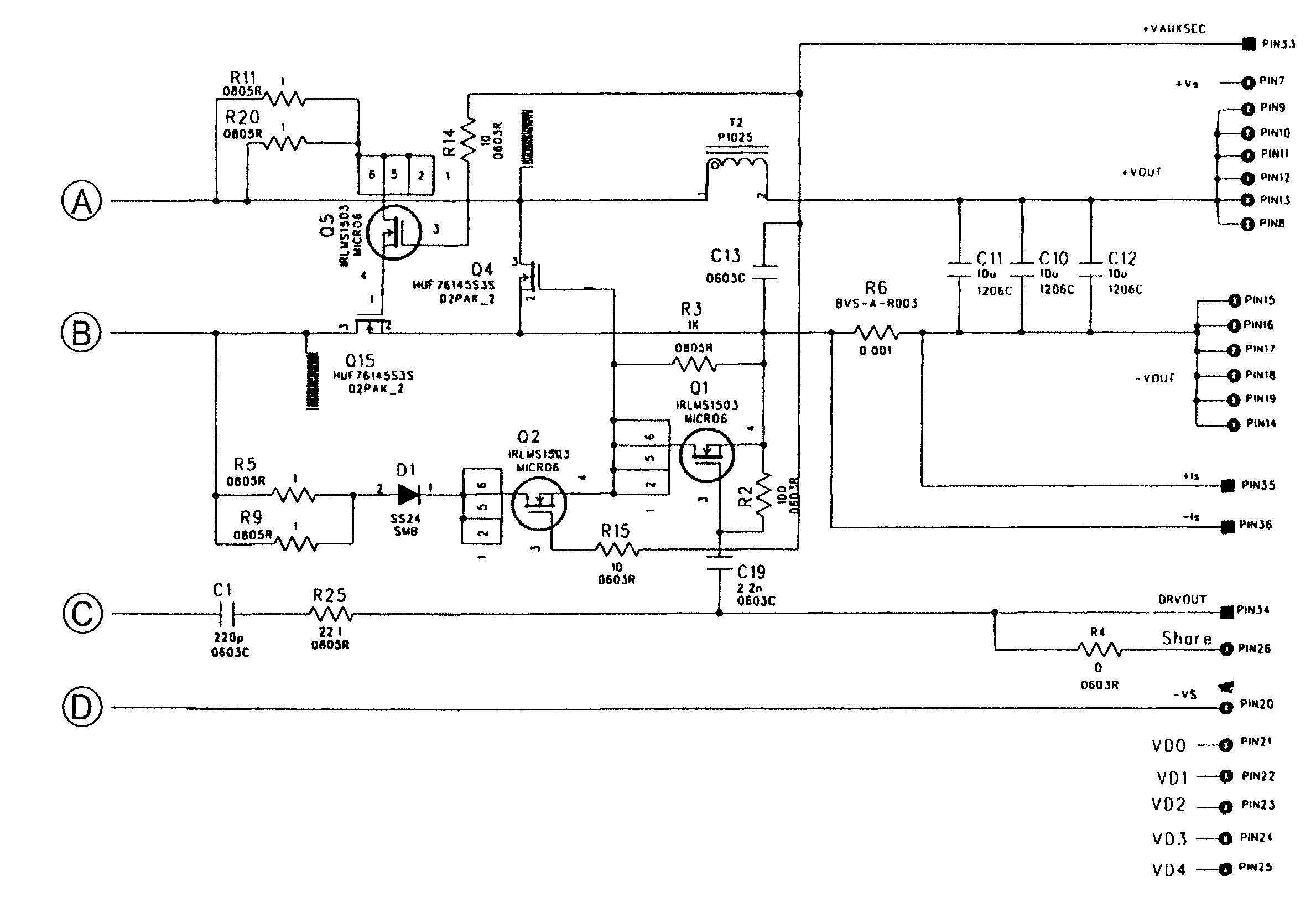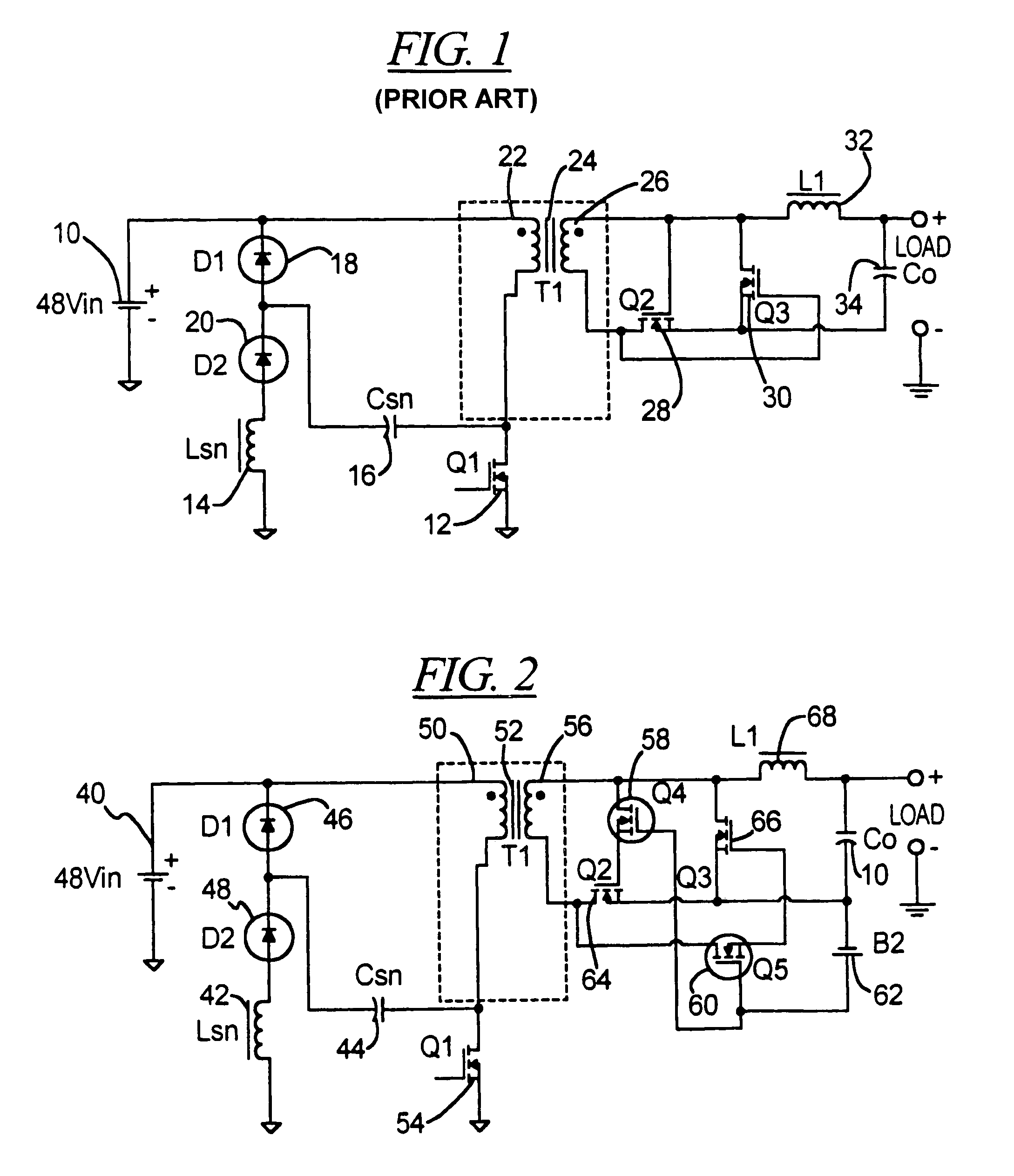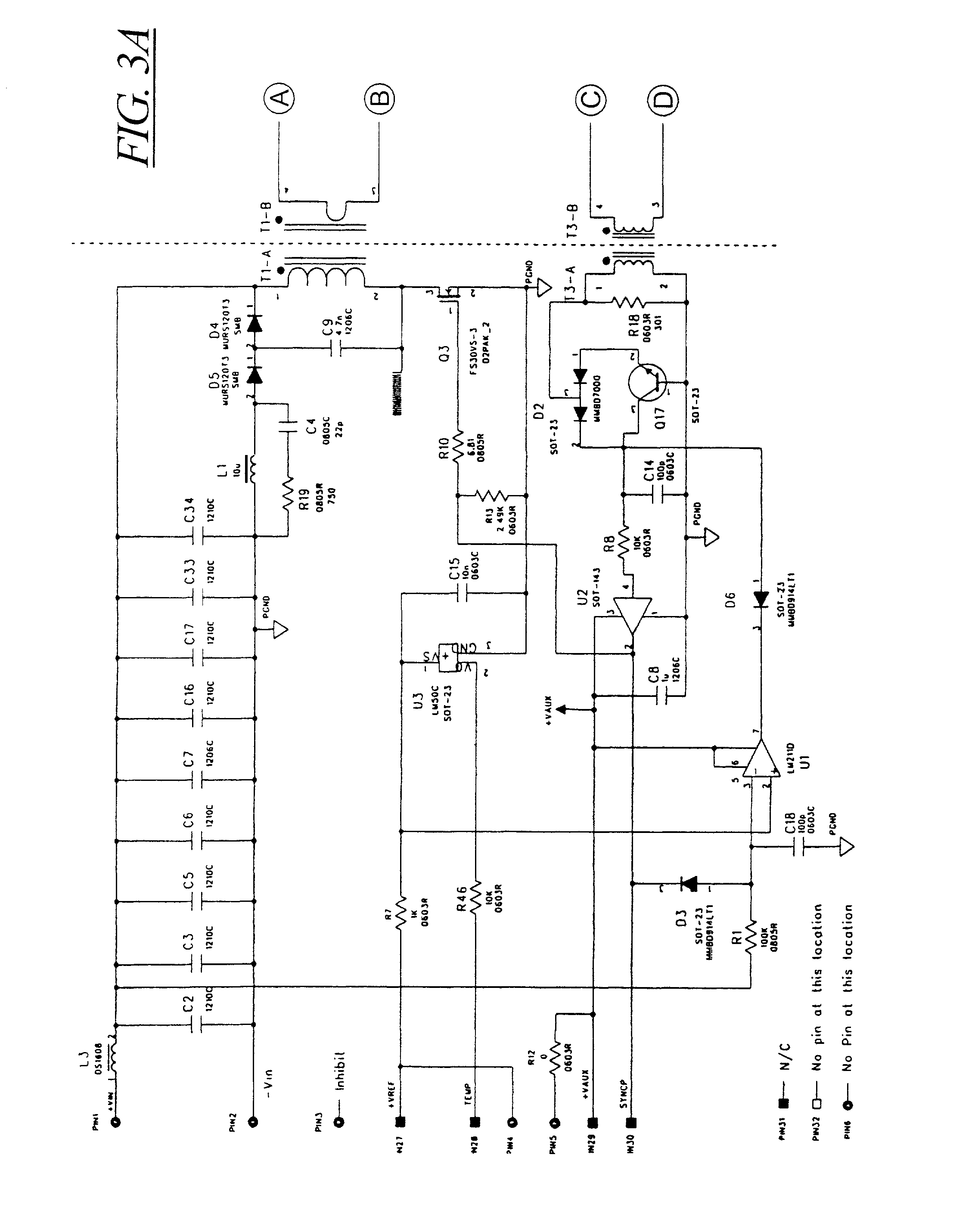Active gate clamp circuit for self driven synchronous rectifiers
a synchronous rectifier and gate clamp technology, applied in the direction of electric variable regulation, process and machine control, instruments, etc., can solve the problems of failure of the device, different voltages of electronic devices, and destruction of the fet, so as to reduce the cost, the effect of reducing the time delay and reducing the power loss
- Summary
- Abstract
- Description
- Claims
- Application Information
AI Technical Summary
Benefits of technology
Problems solved by technology
Method used
Image
Examples
Embodiment Construction
[0023]Referring to FIG. 2, an input voltage 40, which is supplied, for example, by a power supply unit of an electronic device, is provided at an input of a resonant primary snubber circuit including an inductor 42, capacitor 44 and diodes 46 and 48. These are connected to a primary side 50 of an isolation step-down transformer 52. A power switch in the form of a transistor 54 is also provided on the primary side 50. Although this circuit arrangement is shown for the primary side, other circuit arrangements are also possible. For example, resonant reset circuits, both active and passive, on either primary or secondary side of the transformer 51 are possible, as well as different topologies such as a two-transistor forward converter topology. For example, the converter may have a feedback loop connected to the primary side for regulation.
[0024]On a secondary side 56 of the transformer 52, transistors 58 and 60 have been added to the circuit of FIG. 1. The gates of the transistors 58 ...
PUM
 Login to View More
Login to View More Abstract
Description
Claims
Application Information
 Login to View More
Login to View More - R&D
- Intellectual Property
- Life Sciences
- Materials
- Tech Scout
- Unparalleled Data Quality
- Higher Quality Content
- 60% Fewer Hallucinations
Browse by: Latest US Patents, China's latest patents, Technical Efficacy Thesaurus, Application Domain, Technology Topic, Popular Technical Reports.
© 2025 PatSnap. All rights reserved.Legal|Privacy policy|Modern Slavery Act Transparency Statement|Sitemap|About US| Contact US: help@patsnap.com



